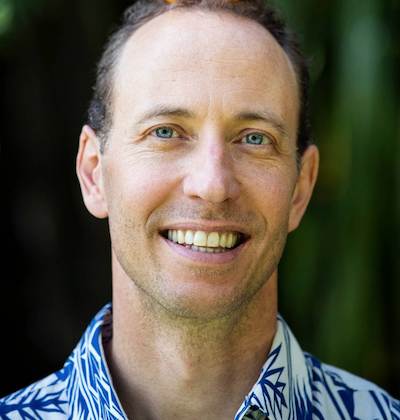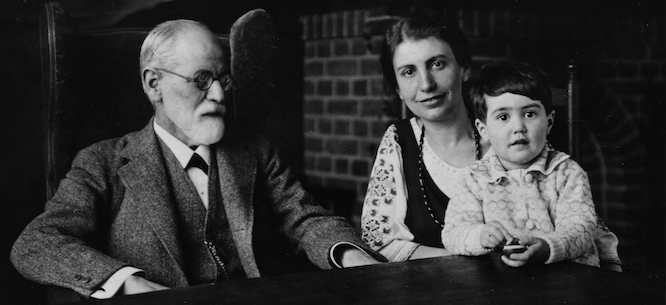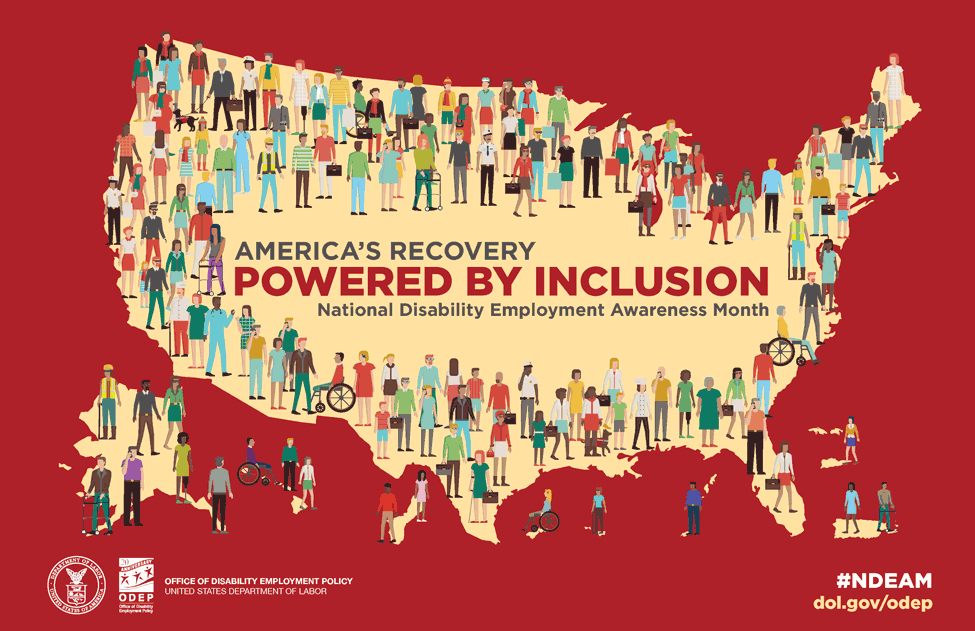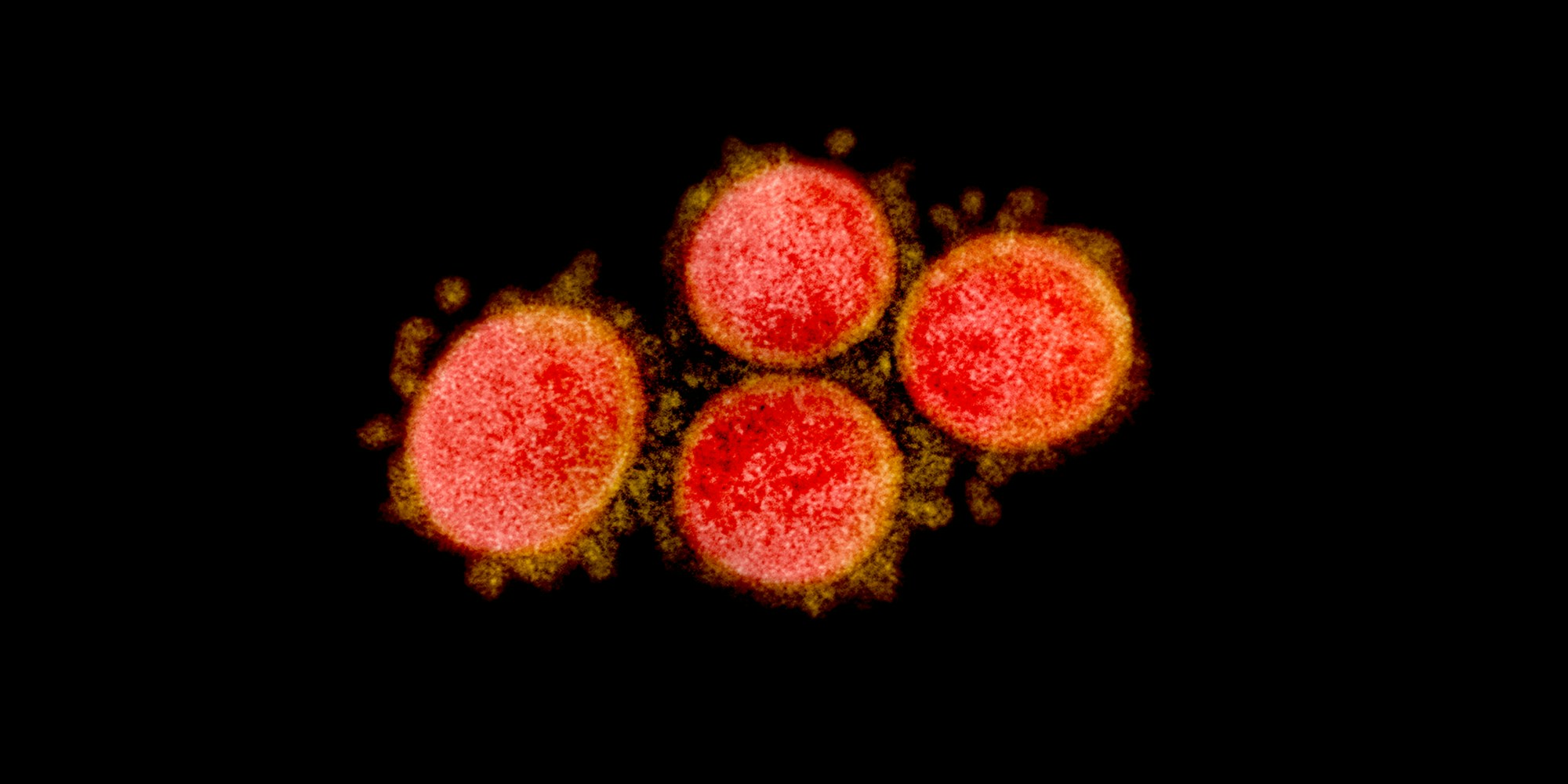
Why is anger a motivation for writing this book? Because the rapid growth and professionalization of my field…has led it to abandon a commitment it made at the inception of that growth. That is to establish mental health base on research findings The practice would ignore the research…Instead, too many mental healthcare professionals rely on trained clinical intuition… it is often no different from the intuition of people who have had no training whatsoever… What our society has done is to license such people to do their own thing while simultaneously justifying that license on the basis of scientific knowledge which those licensed too often ignore.
Robyn M. Dawes, House of Cards: Psychology and Psychotherapy Built on Myth, Free Press, 1st edition, November 24, 2009
Orientation Questions and Claims About Psychotherapy
- Many clinicians think adult behavior is determined mainly by childhood What does the research show?
- Surely interviewing and building case studies provide better predictability of individuals than actuarial statistics like those used by insurance companies.
- The projective testing techniques like the Rorschach tests have shown to be very helpful in getting out the client’s unconscious motivates and drives.
- How much does the age of the therapist indicate greater learning in the field? Surely this is true because all older therapists have more experience.
- How well does raising self-esteem with psychological techniques predict improvements in personal and social behavior?
- Does possessing a license imply that therapists are using scientifically sound methods?
Turning from the therapy office to the courtroom:
- How good does professional psychological testimony in legal proceedings work in predicting competency for standing trial, establishing divorce and child custody or allegations of child abuse in the absence of physical evidence or reliable witnesses?
- What are the chances that clinicians can know what someone was thinking just before they committed suicide?
- Could therapists tell within 10 minutes of meeting them when someone has been sexually abused as a child based on that person’s general demeaner?
- How likely is it that multiple personality disorders result from repeated sexual abuse or being raised by parents who practiced Satanism?
Defining the Boundaries of Psychology
This article is based on a very powerful criticism of the field of professional psychology by Robyn M. Dawes: House of Cards: Psychology and Psychotherapy Built on Myth.
Are psychological problems mental illnesses?
Recently “mental illness” is being presented in our society as just the same as any other illness. According to Dawes, this has been done to destigmatize emotional distress by claiming that it is an illness is nothing to be embarrassed about. But the constant repetition of this assertion has gradually convinced the public and professional psychologists themselves that what psychotherapists or paraprofessionals do to alleviate emotional distress is similar to what medical doctors do to alleviate or cure physical disease. This is a very bad analogy, as we shall see. We must proceed carefully.
According to Dawes, there are three important mental illness categories for judging people’s mental health:
- An outside observer thinks its dysfunctional
- The individual client reports it as emotional distress
- The behavior is derogated by others
Critics like Szasz and Masson concentrate on the third characteristic.
Psychology does not have the rigor of medicine or engineering
The problem for psychologists in calling psychological problems “illnesses” is that they create expectations that their practice is more rigorous than it is. It promises results that they cannot deliver. The field of psychology cannot give the results of engineering or medicine. We trust engineers because city buildings don’t fall down, and we rarely see plane flights that crash. We trust doctors because we have evidence it works. Doctors take out appendixes, and antibiotics and surgeries can cure people of many diseases. Once cancer enters the bloodstream, we can usually predict what will happen.
The need for psychology to be cautious
Professional psychologists cannot predict what an individual will do with this kind of accuracy. Dawes says:
There is always more unexplained variation in the results than there is variation that can be explained by the trend we believe the study has supported. (29)
Responsible professionals should practice with a cautious, open, and questioning attitude. The field of psychology has developed several effective measuring devices and ways to predict future behavior. The most surprising thing is that it can be administered without much training and does not require extensive degrees, training, or experience to interpret.In addition, some people who experience distress will simply get over it, whether they are in treatment or not. When high school students were asked to predict which patients would become violent, their average judgments were almost identical to the average judgment of professionals. Some therapists’ research in:
…behavior and theory (are) derived from careful research studies and an analysis of their implications. Ironically, these are often not high-priced people; They are associated with universities and their treatment is systematic, they often involve several paraprofessionals in their teams. (290)
There is very little evidence that expertise in the mental health area has brought about a reduction in the incidence of emotional disturbance and distress. Even great champions of drug therapies maintain that all these drugs do is control the condition. According to Dawes, while therapy helps two thirds of the clients, it leaves the other third worse off than if they were in a control group. A profession with this kind record of failure rate would seem to require caution all the more.
Cognitive biases of professional psychologists
Clinical judgment is often based on a number of cognitive biases:
- In searching one’s memory in building a case, there is something called the “availability bias”. Because of selective exposure, recall will be selective. We are more likely to remember some things more than others.
- The “representative bias”. This is where you fit the evidence that most likely fits with the stereotype of that person or situation.
- The “vividness bias”. Therapists are no different than other people in that they are drawn to stories that are vivid in terms of color, music, smell, taste, or touch. These cases will stick out in their minds over a variety of drab cases.
Scientific methods: how do we know what we know?
How do we know what we know? By the ability to predict. In other words, if you know a phenomenon well, you should be about to show me what happen next. In doing this, a scientist must not only have a group of people with whom he tests his hypothesis. He must also have a randomly controlled group alongside of it in evaluating treatment and therapy.
To summarize, what is needed to test a professional psychologist’s claim to understanding is:
- An assessment of their predictive power.
- A comparison of the accuracy with that of some other means of prediction.
- The ability to reach their conclusions in a way that would convince skeptics.
- Allow the outside observers to reach a conclusion about its effectiveness. In psychotherapy symptom remission is a prime candidate for such an indicator.
In terms of evaluation of the therapy, patients are not reliable judges because they have spent a great deal of money. It would be hard to admit it wasn’t worth it. Therapists are not good judges because of all the time they spent with the client, and they have a theory to defend.
Why statistical reasoning is necessary
Statistical predictions are specifically designed to discover a pattern of contexts of variability. People have a very great difficulty time combining qualitatively distinct or incomparable predictors. Dawes gives the following examples:
- How does an interviewer for a student applying for medical school combine information about a past college record with a score on the medical school aptitude test?
- How to integrate information about past job history with a self-reflective statement about ambitions and goals?
- A positive test result with an unusual Rorschach inkblot test with the knowledge that a disease indicated by such results are extremely rare.
The problem is the more we know about people through interview case studies, the more complicated these individual cases get. In reaction we might be tempted to be drawn to striking but irrelevant information rather than statistically valid information, which is less striking.
Bad judgments among professional psychologists:
As we will see, many professional psychologists do not follow scientific procedure or rely on knowledge of actuarial tables when:
- judgments are made in the absence of well validated scientific theory;
- when therapists are evaluated without systematic feedback about how good they are;
- the supportive evidence is simply hypothesized;
- the negative evidence that has been collected is simply ignored, or;
- arguing from a vacuum – what is purported to be true is supported, not by direct evidence but by attacking an alternative possibility.
Does Licensing Assure Quality?
There are various unlicensed people who also present themselves to the public as experts, such as rape counselors, alcohol counselors, and religious counselors. This is one set of problems. But what about those who are licensed? Surely, they must be better. Does licensing ensure that valid scientific techniques of findings will be used by professional therapists in a valid manner? Sadly, the answer is no. Licensing is set up for institutional psychological settings like hospitals, prisons, psychological wards, or halfway houses. The problem is that these settings deal with patients very different from the relatively tame clients that private psychotherapists see. In addition, according to Dawes, only 9.8 percent of licensed psychologists work in these settings.
The education and training psychologists receive is not necessarily training in valid scientific techniques or theories. The licensing does not mandate that the psychologist share with the client the fact that they are employing a technique where no scientific standard exists. Nor that they are practicing techniques that are not generally accepted as reliable in the psychological research community. In 1990, only 30% of APA members subscribed to any of its journals. Licensing can be defined as official and legal permission to do or own any particular thing. But another definition can also mean deviation from normal rules and practices. Licensing has ironically and unintentionally taken on the last meaning. Professional psychologists have been granted a license to ignore the research once they have the license.
Dilution and deterioration of the field
In addition, the field is on the one hand growing by leaps and bounds, but it is also deteriorating in quality. Here Dawes describes a personal experience:
When I joined the APA in 1959 it had approximately 18,000 members…When I quit in 1988, there were 68,000, approximately, 40,000 of whom were in clinical or counseling… Psychological association members in professional practice grew by a factor of 16. Clinical psychologists had doubled its numbers every 10 years. For comparison the doubling rate of lawyers is 12 years; social workers 14 years; psychiatrists 20 years. The selling point for psychologists over psychiatrists used to be that they had more extensive research training. In the light of this. The APA recognized a new degree, the Doctor of Psychology without research training PsyD (12)
…During that expansion the rigor of the scientific training of practicing psychologists diminished. We are not graduating thousands of psychologists. We are graduating thousands of practitioners who are peripherally acquainted with the discipline of psychology (6)
If the professional psychologist allows himself to be drawn into private practice, the chances of keeping up with the research and incorporating it into their practice shrinks.
The steady erosion of professional’s commitment to research findings is a basis for practice over the past 30 years. There has been an explosion in numbers which assures that there will be more bad therapists around in the 1990s than at the time when the studies were initiated (14)
Parameters and Qualifications
There are six basic schools within psychology: psychoanalysis, behaviorism, cognitive, biological physiological, biological-evolutionary, and humanistic. The criticisms Dawes has laid out against professional psychology is only directed at psychoanalysis, and to a lesser extent humanistic psychology. Why? First, because they do not limit themselves to interventions that have been proven to work. Secondly, they do not create settings which lend themselves to scientific scrutiny. Psychoanalysis and humanistic psychological theories do not follow the science. Dawes is not suggesting that psychotherapy doesn’t work. He is suggesting that:
- we can only know what works if the therapist follows and applies scientific research in therapy;
- therapy can be successful regardless of the credentials, or training. A skilled paraprofessional is just as good as a professional provided – they have empathy and;
- experiences of the therapist are unrelated to outcomes since the setting of therapy does not easily lend itself to immediate, consistent, and repeated feedback from an outside source.
Despite these disturbing conclusions from a professional psychology point of view, the salaries of professional psychologists are high relative to researchers and academic psychologists. Professional psychologists would, no doubt, like to keep it that way. These conclusions are based on over 500 scientific studies of the psychotherapy outcome.
Psychoanalysis and humanistic psychology do share one common characteristic: individualistic egoism. Dawes points out that this egoistic individualism framework is consistent with frameworks in other social sciences, like classical economics or political science. This leads to the following individualist mistakes of psychodynamics and humanistic psychology:
- a preference for case studies rather than statistical reasoning;
- attempting to build self-esteem before taking action (as opposed encouraging action first and seeing if that might raise self-esteem) and;
- motivation and insight must precede effective behavior.
I am not a stranger to the field of psychology. In addition to teaching as an adjunct in college and psychology departments for 27 years, I worked in halfway houses for two years in the 1990s. I worked in a 40-week training, court-ordered program for two years called Men Overcoming Violence. I have worked as a private counselor with a specialty in goal setting and overcoming procrastination. In most of these settings I used the methods of cognitive psychology. I have an M.A. in counseling psychology.
Psychoanalysis
Table A below shows the most important myths of psychoanalysis that Dawes points out: Weaknesses of interviews and case studies
Weaknesses of interviews and case studies
Some professional psychologists think they and their clients are above statistical reasoning. They say that while statistical generalizations can be useful, they cannot predict what the therapist’s client is likely to do next. For this, the therapist claims their knowledge of this individual case will deliver the goods. After all, the individual is “unique”.
Besides, humanistic psychologists might say, statistical predictions are “dehumanizing” because they reduce people to “mere numbers”. In addition, these findings are taken as an affront to the self-image of the purported experts themselves. For persuading the public on television shows that while single vivid anecdotes might work, they don’t work in science. In the majority of situations, the individual’s past behavior is the best predictor of future behavior, and these can be given with statistics.
Actuarial statistics hold up better in hospitals and prisons, according to Dawes. Weighing actuarial variables of those in hospitals like material status, length of psychotic distress and the degree of patient insight, outperformed the hospital’s medical and psychological staff members’ opinions. Turning to prison recidivism, actuarial variables, like past criminal records and current prison behavior, predictions of whether the prisoners would return to prison have proven better than expert criminologists’ predictions:
Jack Sawyer, 12 years later, published a review of about 45 studies; again, in none was the clinical prediction superior (83)
…Professional psychologists could not even detect young adolescents who were faking brain damage on standard intellectual tests after {the subjects} were given no instruction other than “to be convincing”. Yet less than 10% recognized the fake results. (91)
In the business context of predicting bankruptcy, a formula has been found to be superior to the judgement of bank loan experts (93)
It is not as if the case study and interview is worthless. The interview can be good for framing the kind of questions asked, and the categories that should be included in the experiment. In addition, the qualities that impress therapeutic interviews are not the same as how the client acts at work, with their co-workers and supervisors, or at home with their families where they live their lives. Despite all this, experts continue to interview and make predictions, and express great confidence in the validity of their predictive judgments.
Ignoring the counterfactuals
Psychoanalysts ignore what are called hypothetical counterfactuals. For example, in the courts, knowing what would have happened if custody had been granted to the other parent. Mental health workers in hospitals notice people who return to an institution, but do not notice those who do not.
Making up theories and tests that have not been scientifically validated
Perhaps the worst license of all is the “license” to make up one’s psychological theories from the psychologist’s experience with clients that have not been peer reviewed or tested. Secondly, the “license” to make up one’s tests from experience without scientific validation. This often leads to the Barnum Effect, where the list of the symptoms gets larger and larger and where virtually every symptom becomes an indicator of the problem. I have seen this happens over the years with the use of symptom growth of ADHD, borderline personality, narcissism, and addiction.
In a courtroom setting, both manufactured theories and tests are presented as part of being an expert witness. This license that has been granted is frightening in cases of child abuse and sexual abuse. The claim of some professional psychologists to detect child abuse has been to assert that “children never lie”. The subconscious mind is claimed to have a memory bank of everything we ever experienced – exactly as we perceived it. This flies in the face a great deal of research that indicated the flawed nature of human memory. Its nature is reconstructive – such that events that literally never occurred can be recalled in great detail with the proper leading questions by the therapist, both in therapy and in the courtroom.
Making the past determine the present
Historically, psychoanalysis has made its bread and butter from telling people that events that occurred within the first three years of life pretty much determine how adults turn out. Dawes points out that there is no evidence for this, especially in determining child abuse. He says:
There is no evidence that childhood abuse and neglect will out, or that it will have some permanent effect on adulthood without it first having an effect on adolescence. (219)
Jerome Kagan, who has spent decades studying temperament in young children, says: continuity does not imply inevitability. The human organism is highly resilient in the face of deleterious experiences and sufficiently malleable to bounce back, given constructive inputs. Only continual obstacles will prevent an initial bend in a twig from righting itself towards the sun. (218)
The problem is that feeling and believing that one is a victim of early traumatic experience is likely to induce a demoralized state in which the person stops trying to make things right in the present. Or they must wait for years until they develop insight with the therapist’s help into what really happened so that these early events no longer haunt their lives. In the meantime, their lives can become worse. Dawes says the therapist should be blamed for putting unscientific ideas in people’s heads and teaching them to hate their parents. Where is the evidence that simply learning to blame or hate somebody is therapeutic?
Doll interpretations are not scientific
In the courts, professional psychologists often turn to doll play for as a tool for finding out if a child has been abused. Dawes says there is no psychological evidence that this works. Currently there is no standardized set of questions for conducting interviews using the dolls or standardized agreement as to how to interpret them.
This lack of validity does not prevent professionals from using the technique. The sad reality is that agencies not directly connected to psychology are using these unscientific techniques, including child protective agencies and the criminal justice system.
Rorschach tests aren’t scientific
Whether in or out of court settings, Rorschach tests are very popular among clinicians. This is popularly known as the inkblot test. Vague images are presented that are either the result of actual inkblot patterns resulting from a folded paper with a blot of ink on it or standardly vague images are presented and then interpreted. For example, the clinician interprets whether the client attempts to integrate the entire blot into a single image or uses only part of it or only focuses on small detail. Use of the whole blot is interpreted as needing to form a big picture of grandiosity. Tiny details are interpreted as being an obsessive personality. The content of the imagery also matters. Many people see animals, but too high a proportion of animals indicates immaturity or a lack of imagination. Seeing figures that are part human and part nonhuman like satyrs, cartoon characters, or witches indicates alienation. It’s not that these interpretations aren’t interesting. But a therapist with a license that requires them to be scientific should not be making untested interpretations while making money off the public’s dime.
These tests have been dismissed by scientific psychologists:
In 1959, many of the world’s most eminent psychologists were lined up against the use of the Rorschach. Hans Eysenck quoted Lee Cronbach, one of the world’s leading experts of psychometric testing, said that “the test has repeatedly failed as a prediction of practical criteria”. In 1978 Richard H. Davis concluded that “the general lack of predictive validity for the Rorschach raises serious questions about its continued use in clinical practice”. (151-152)
After all this, why does it continue among licensed professionals. One reason is that it has intuitive and creative appeal. But another reason could be they are paid well for administering it.
Humanistic Psychology and the Obsession with Feelings and Self-Esteem
I feel, therefore I am
Late in his book, in Chapter 8, Dawes shifts gears from writing about the problems of clinical psychoanalytic therapies to what he unfortunately calls “New Age psychology”. What he is describing (the preoccupation with feelings and the obsession with self-esteem) were happening long before the New Age, the beginnings of which I date around 1978. The school of psychology that fits the bill is humanistic psychology. So, I will continue to describe the results of his research,but I have renamed the school as it is an expression of “Humanistic”, not New Age psychology.
As far back as the 18th century Enlightenment, the cause of psychological behavior was believed to be conscious choice after rational weighing of pros and cons.
For the Calvinists of 16th and 17th centuries, lack of willpower was considered a problem and needed to be overcome through prayer and introspection. Emotions were never taken seriously. They were seen as temporary fits of irrationality. It was not until the romantics in the hundred-year period between the end of the 18th and 19th centuries that emotions were not only taken seriously but were also considered primary. Humanistic psychology, just like the counterculture it sprang from, is directly connected to Romanticism.
The tendency of humanistic psychologists is to reduce all problems being determined by feelings which are repressed and need to be expressed. As Dawes writes, the platonic hierarchy was turned on its head. Contrary to the Enlightenment, it was rationality that was the problem. The belief is that we can only get better by allowing the magical but bratty child within to come out. Self-esteem
Self-esteem
Beginning in the late 1970s, poor self-esteem is often cited as the cause of everything from failure to learn in elementary school, to failures in business, to failed marriages. Nathaniel Branden’s The Psychology of Self-Esteem propagated the importance of self-esteem. Instead of self-esteem arising as a result of action taken, high self-esteem was presented as a pre-condition for taking action. Diminished self-esteem stands as a powerful independent variable. But what does it matter that we know why we exercise before exercising? The behavior is more important than the motives for engaging in it. It is not necessary to feel wonderful about ourselves first. Dawes writes:
there is no evidence that for the majority of people a change in internal state and feeling is necessary prior to behaving in a beneficial way. (293)
Nevertheless, long-time state assemblyman John Vasconcellos promoted the establishment of a task force to promote self-esteem and the governor of CA, George Deukmejian, signed a bill to fund its work in 1986. The conclusions after putting these problems into practice were the following:
- There is insufficient evidence to support the belief in a direct relation between low self-esteem and child abuse.
- Low self-esteem should not be perceived as the primary cause of child abuse especially when compared to other factors such as age, employment status, availability of childcare and economic insecurity.
- There is no basis for arguing that increasing self-esteem is effective in decreasing child abuse.
- there is no evidence that lower self-esteem plays a causal role in alcoholism or drug use.
Furthermore, Dawes writes that this way of thinking about low self-esteem discourages taking action, and instead seeking talk therapy. More importantly, raising the self-esteem of children had no bearing on the academic performance of Yankees compared to students in Japan and China in the areas of geography and mathematics. Yankee students also do much less homework and have a shorter school year. They are poorer students despite the crusade to raise self-esteem in the schools. Finally, Dawes claims that attempts of schools to raise self-esteem by lowering standards hurts children in the long run.
Mental health equals living on the sunny side of the street
Humanistic psychology’s picture of mental health consists of high self-esteem, optimism, feelings of invulnerability, and self-confidence – all characteristics which are internal, pervasive, and stable over time for one’s own success. Conversely external locus of control, specific conditions and fleeing explanations go with one’s failure. This argument may be found in Shelley Taylor’s Positive Illusions: Creative Self-Deception and Heathy Mind.
By the late 1970s, the decline of Yankee capitalism had not reached the middle classes, and even working-class people could still imagine that the American dream was possible. With the proper internal characteristics – hard work, frugality, prudence and preservice – people could live the dream. But as the standard of living declined steeply for middle-class and working-class people, how psychologically healthy was it to continue to imagine you can pull yourself up by your own bootstraps? Having good reasons for being pessimistic might be healthier. If a worker is out of work because of the chaotic capitalist economy, wouldn’t it be healthier to have an external locus of control which blames the system, not the individual? Nonetheless, for comfortable upper middle-class professional psychologists, the mandate they give us today is the old “pull yourself by your own bootstraps”, and “don’t worry, be happy” at whatever cost to one’s own reality testing.
How Do Professional Psychologists get away with this?
The myth that expanding experience leads to increased learning
Part of the reason the public has gone along with the lack of the use of science on the part of clinicians is because of the public’s belief that long-term experience enhances the performance of professionals. After all, it does that in other professions, such as medical procedures being performed by surgeons. However, in the case of mental health professions, because of the lack of critical, consistent feedback, it is far from a done deal that therapists learn from their experience. The empirical data indicates that:
- mental health professionals’ accuracy of judgment does not increase with clinical experience once a rudimentary mastery of the techniques has been learned, and
- neither does their success as psychotherapists.
Learning motor skills is not the same as learning how to categorize and predict
It is clear we learn many motor skills, gradually from practices such as learning to drive in a straight line or learning to drive a stick-shift. But are clinical skills in the mental health professions of that nature as well? No, they aren’t. Because the psychologist does not experience feedback about the effects of their intervention on a patient that are:
- Immediate,
- unambiguous (a clear understanding of what constitutes an incorrect response), and
- continuous.
In the mental health profession, none of these conditions are satisfied. The type of feedback mental health professionals is given by their clients tends to be not immediate, chaotic, and sometimes non-existent. The client leaves and the therapist doesn’t know what happened. Meanwhile, the profession has been going merrily along in the absence of such findings, and that reflects the degree to which the profession has lost its research base. The public is not aware of this contradiction between the license and the lack of systemic learning and just trusts them as professionals. The American people know the national mental health problem is getting worse, yet they do not know the research about expertise incompetence.
The power of lobbying
Professional psychology has been able to survive, though far from its resource base in science, by lobbying state and national governments for money and privilege. Clinical work also appeals to students so they can apply their knowledge to real people after years of academic “preparation for life”.
Unscientific clinical theory often matches public intuition
The first need to which arguments are made for enhancing professional psychology is the need for authority. Imagine how extremely difficult life would be if we did not accept what many authorities tell us is true. Life would become impossible. In addition, sometimes the views of therapists’ views often coincide with popular intuition. For example, when people are told about Maslow’s hierarchy of needs, they usually spontaneously agree with it. Yet there is no scientific evidence that the hierarchy of needs matches any scientific testing and follow up. Another opinion that seems to make intuitive sense to the public is thinking that personality factors matter more than situational factors. Social psychologists name this as the “fundamental attribution error”. This is a tendency of people in industrial capitalist countries to:
- attribute personality factors when someone else does something that we don’t like,
- or when we do something we like.
This is opposed to situational variables. Both professional psychologists and the public think individualistically that the person determines what happens to them, not the situation. The fact that psychoanalysis and humanistic psychology ignore the scientific research done by sister psychologists in the same field and fail to incorporate it into their theories demonstrates how rigid they are in their own theories.
Why the public should care
We are all paying for these services through insurance premiums and taxes. Dawes says:
We should not be pouring our resources and money to support high-priced people who do not help others better than those with far less training skill would, and those judgments and predictions are actually worse than the simplest statistical conclusion based on obvious variables. (5).
By supporting licensing, income and status for credentialed practitioners, the mental health professions have treated variables that really don’t matter as if they did matter. (62)
In the case of so-called “repressed memories” in court settings, parents are fighting back against charges of incest by children at the prodding of clinicians with half-baked unscientific theories:
A new group called the False memory Syndrome Foundation (1992) had a membership of about 2,000 families, mainly parents who claimed that they were falsely accused as a result of their children’s “therapy”. By the end of the first half of 1993, the membership had grown to over 4,600. (173)
By 1994 the foundation had grown to more than 7,500 members. It was dissolved on December 31, 2019.
Conclusion
The purpose of this article is to expose the exploitation of psychological licenses on the part of psychoanalytic and humanistic clinicians who ignore scientific research in the field while claiming expertise on the dime of the public. After some rhetorical questions and answers about the field of psychology, I began by raising questions about whether psychological problems can be categorized as mental illnesses. Then I discussed how the field of psychology does not have the rigor of predictability of medicine and that the field of psychology needs to be cautious in their claims. I discussed three typical cognitive biases in the field as well as five bad judgments that psychologists make. I contrasted this to the process of good scientific reasoning as well as the necessity of making psychological judgments based on actuarial statistics rather than case studies. In the next two sections I discussed why licensing does not assure quality judgments and how the field of professional psychology is overpopulated, and the quality of training has deteriorated.
Next, I identified the six theoretical schools of psychology. Four of the six follow scientific research while psychoanalysis and humanistic psychology tend to ignore it. In the next two sections I discussed the myths of psychoanalysis by outlining the weaknesses of case studies as a method. I also pointed out the unscientific nature of the use of dolls to ascertain child abuse as well as the use of Rorschach tests for determining psychological problems. Next, I turned to humanistic psychology and its championing of the central importance of emotions and self-esteem in psychological life. Dawes argues against the cathartic theory of the emotions as well the need to raise self-esteem prior to taking any action. He points out that the children of the Yankee population are way behind the children in China and Japan, despite many years of implementing techniques of raising self-esteem in schools. Lastly Dawes challenges the Pollyannish humanistic equation of psychological health with happiness and internal locus of control. Psychological health does not automatically mean living in the sunny side of the street.
Dawes makes the following claims based on 500 validated scientific studies:
- we can only know what works if the therapist follows and applies scientific research in therapy;
- therapy can be successful regardless of the credentials or training. A skilled paraprofessional is just as good as a professional provided they have empathy; and,
- the experiences of the therapist are unrelated to outcomes since the setting of therapy does not easily lend itself to immediate, consistent, and repeated feedback from an outside source.
Anticipating Objections
Single studies that contradict his thesis aren’t enough because the generality of his conclusions is dependent on:
- multiple studies,
- conducted on multiple problems, and
- multiple contexts.
It would take a substantial body of new research to overturn the conclusions presented here. A new finding or set of findings that would turn the whole field I have discussed upside down is extraordinarily unlikely to occur.
Given that this book was written in 1994, it is tempting to think new research has been found to overturn Dawes’sargument. In critical book reviews I have not found significant challenges. By way of closing, I would invite you to review the questions and statements I made at the beginning of this article to see if your questions have been answered.
• First appeared in Socialist Planning Beyond Capitalism

The post
The House of Cards of Clinical Psychology first appeared on
Dissident Voice.
This post was originally published on Dissident Voice.























